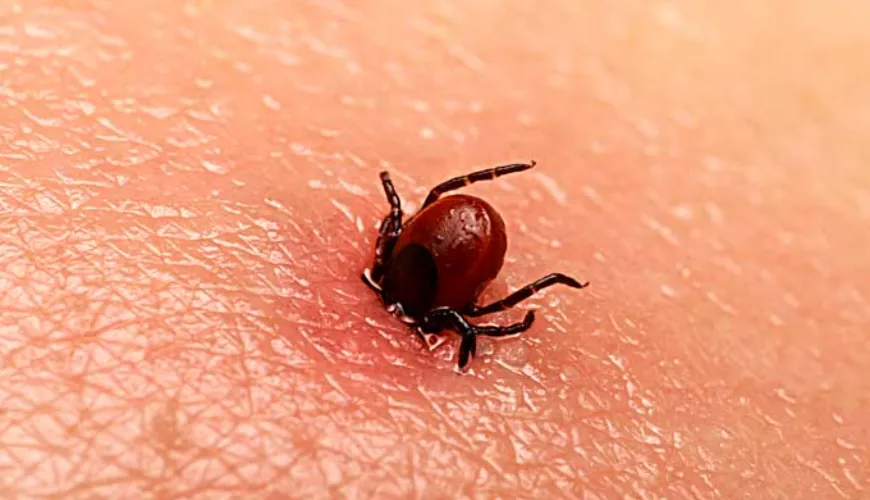
Lyme disease can also occur without a tick bite.

Lyme Disease Without Tick Bite
When Lyme disease is mentioned, most people immediately think of a tick bite. This small parasite has long been considered the primary transmitter of Borrelia bacteria, which cause the dangerous disease known as Lyme disease. However, more and more patients report being diagnosed with Lyme disease without ever having come into contact with a tick. This phenomenon raises questions: is Lyme disease without a tick bite truly possible, and if so, by what means can it be transmitted?
How Can Infection Occur?
Lyme disease is an infection caused by Borrelia burgdorferi bacteria and is primarily transmitted by ticks that suck blood and infect the host during this process. Traditionally, it is assumed that ticks are the main means of transmitting this bacterium, but there are opinions that Lyme disease without a tick bite can also be transmitted by other insects. There are cases where patients claim they have never been bitten by a tick, yet they developed the disease.
Theories about the transmission of Lyme disease by insects other than ticks are based on observations and research exploring the possibility that mosquitoes, fleas, or mites may also play a role in transmitting Borrelia. However, there is currently insufficient scientific evidence to definitively confirm this theory. Most experts remain cautious in claiming that Lyme disease without a tick bite could be transmitted in these ways, thus further research is needed.
Try our natural products
Invisible Tick? Could This Be the Reason
One possible explanation for Lyme disease without a tick is that people simply do not notice being bitten by a tick. Tick nymphs, which may be responsible for transmitting the infection, are very small—often measuring less than 2 millimeters. This means that a nymph bite can go completely unnoticed. A tick can attach to the body for several hours or even days without causing any visible symptoms, such as redness or swelling. Many people may therefore think they have contracted Lyme disease without a tick, without realizing that contact with a tick did occur.
Another factor could be that some individuals have a lower reaction to a tick bite, meaning that even after removing the parasite, they may not see the typical red spot associated with Lyme disease. This fact may also contribute to the mistaken impression that Lyme disease occurred without contact with a tick.
Alternative Transmission
There is also the question of whether Lyme disease can be transmitted by other means than direct tick transmission. Some theories suggest that Borrelia bacteria could be transmitted from person to person through blood or even sexual contact. However, there is currently not enough scientific evidence to unequivocally support this possibility. Most experts agree that transmission among humans is highly unlikely, and ticks remain the main means of transmission.
Nonetheless, research in this area continues, and it cannot be completely ruled out that new insights into other possible transmission methods may emerge in the future. Borrelia are bacteria that have the ability to survive in various conditions and can attack different tissues in the human body, indicating their considerable resilience and adaptability.
Try our natural products
Symptoms of Lyme Disease
Regardless of whether Lyme disease is caused by a direct tick bite or another method, the symptoms are mostly the same. The most common symptoms include:
- Extreme fatigue
- Headaches
- Muscle and joint pain
- Fever
- A typical red spot around the bite area, known as erythema migrans
However, this spot may not always appear, which can be one reason why some patients are unaware they were bitten by a tick.
If symptoms appear, it is important to visit a doctor as soon as possible and undergo appropriate blood tests, which can detect the presence of antibodies against Borrelia bacteria. Early diagnosis is crucial for successful treatment, as untreated Lyme disease can lead to serious complications, including neurological and cardiovascular problems.
Try our natural products
Prevention Remains Key
Although there is still speculation about what other routes could lead to Lyme disease without a tick, prevention remains the best tool against this disease. Ticks are the main carriers of Lyme disease, and their activity increases, especially in warm months. Basic measures that can significantly reduce the risk of infection include:
- Using repellents when outdoors
- Wearing light-colored and tight-fitting clothing that minimizes access of ticks to the skin
- Regularly checking the body after returning from the forest or other natural areas
- Quick and proper removal of a tick if bitten
Try our natural products
While Lyme disease without a tick remains a topic of discussion, scientific findings currently indicate that the best defense against this disease is diligent prevention and promptly seeking medical help in case of suspected infection.






















